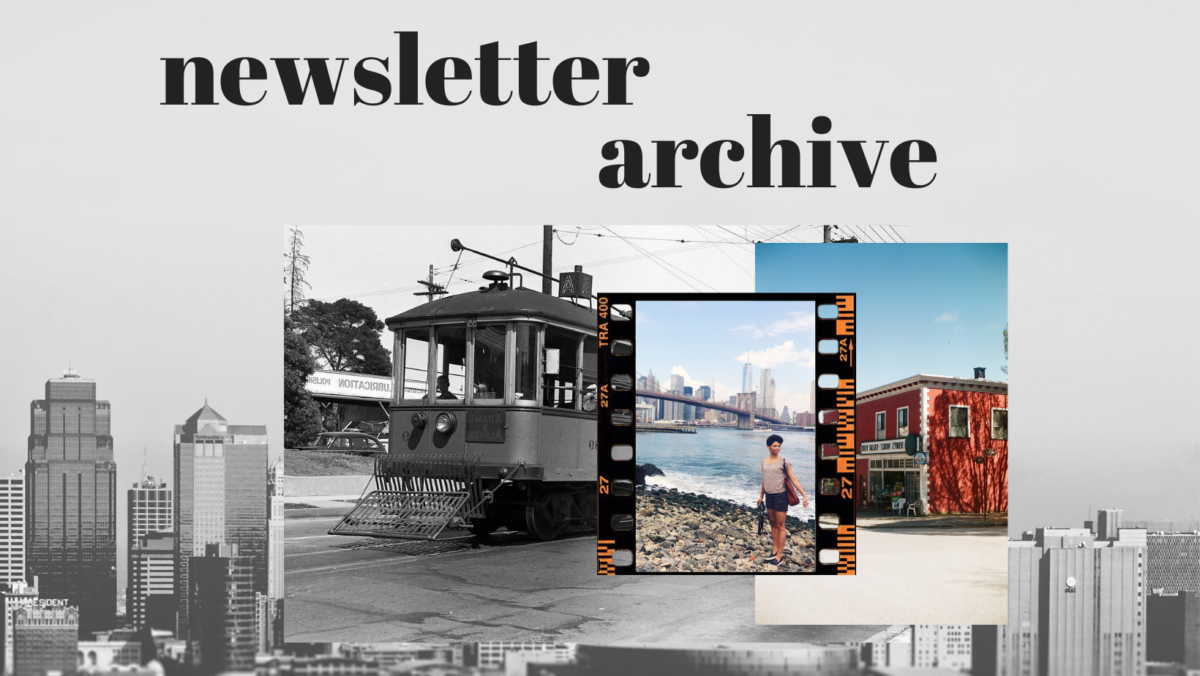This is Part 2 in an email newsletter series about my move from Brooklyn, NY to Waco, Texas. Read Part 1 here.
My first day in Waco, I went on a short historical tour as part of the program I was attending. We visited several historic sites around town such as the Brazos River and the Courthouse on Washington Avenue.
We stood in the bright sun, squinting as the tour guide ran through some of the city’s historical high points: the erection of the Waco Suspension Bridge in 1870 which sparked Waco’s leadership in the cotton industry, the invention of Dr. Pepper in 1885, the horrifying lynching of Jesse Washington in 1916 and the tragic tornado of 1953, from which the city never really recovered. And of course, there were plenty of mentions of the infamous Branch Davidian siege.
I was still a bit tired from my arrival the day before. The burst of optimism I had hoped would come with sunrise eluded me as we toured the city. Instead, I felt uneasy as I took in the built environment: sidewalks emptied of people, an occasional car breezing down a three lane one-way street, several empty buildings and at least half a dozen silent, empty parking lots. I cried twice on that tour and struggled with place-based grief on and off for a few months.
The intensity of my response was a surprise to me, but looking back, I think what I was grieving on a subconscious level was the dramatic (and perhaps traumatic) implications of Waco’s decision to embrace the urban renewal agenda of the 1950-70’s. I can’t really explain how I knew this before reading about the city’s history, but on an intuitive level, I knew that the city before my eyes with its stroads, chain stores, high-speed arterial roads cutting through neighborhoods and lack of public transit was not the way the city had always been.
My hunch was confirmed during a visit to the historical section of the library. As I flipped through historic maps and old phone books, I was amazed to discover the city’s colorful entrepreneurial history and human-centric design.
I felt similarly amazed while flipping through Roger Conger’s book, A Pictorial History of Waco at a friend’s house one evening and while scrolling through the posts on the “Waco, Texas History in Pictures” Facebook group, which a friend recommended.
Slowly, I began discovering a historic Waco marked by robust local involvement, creativity, incremental growth and deep local pride. These glimpses of the city started to warm my heart towards the city.
I began to empathize with the city, realizing that, like most American cities, Waco had suffered great loss not only from the tornado but also from the era of urban “renewal.” During this time, most cities became entangled in a complicated development/financing system dictated largely by state and federal interests and driven by the ever-pressing “need” for outward growth.
This paradigm shift sacrificed much of what Waco lovable: the cluster of various neighborhoods connected by streetcars, the hundreds of small businesses and human-centric public spaces. This discontinuation between Waco’s past and present has stayed with me in the nearly two years since I’ve lived here and it’s something I believe afflicts most American cities.
Sparked by the automobilization of our society, most of our cities have experienced some form of trauma resulting from our choice to pivot away from historic patterns of development or to preserve the rhythms of life that emerged organically as the city evolved incrementally. The pivot away from walkable neighborhoods anchored by commercial districts, street cars, and mixed-income housing is one of the greatest tragedies of American urbanism.
Today, I don’t cry as many angry tears over Waco. I’ve come to see the city through more empathetic eyes, realizing it’s still struggling with its traumatic past, an unfortunately failed attempt to revitalize its downtown and limited capacity when it comes to envisioning a new future.
To its credit, many of the city’s leaders are trying to envision a more human-centric version of the city, but to do so Waco, and any other American city would be wise to turn a humble eye towards its history and seek to learn from the mindset, assumptions and priorities that drove our decision-making and development patterns back then.
Thanks for reading. Please share with a friend if you find this interesting! If you’re that friend, you can subscribe here.
